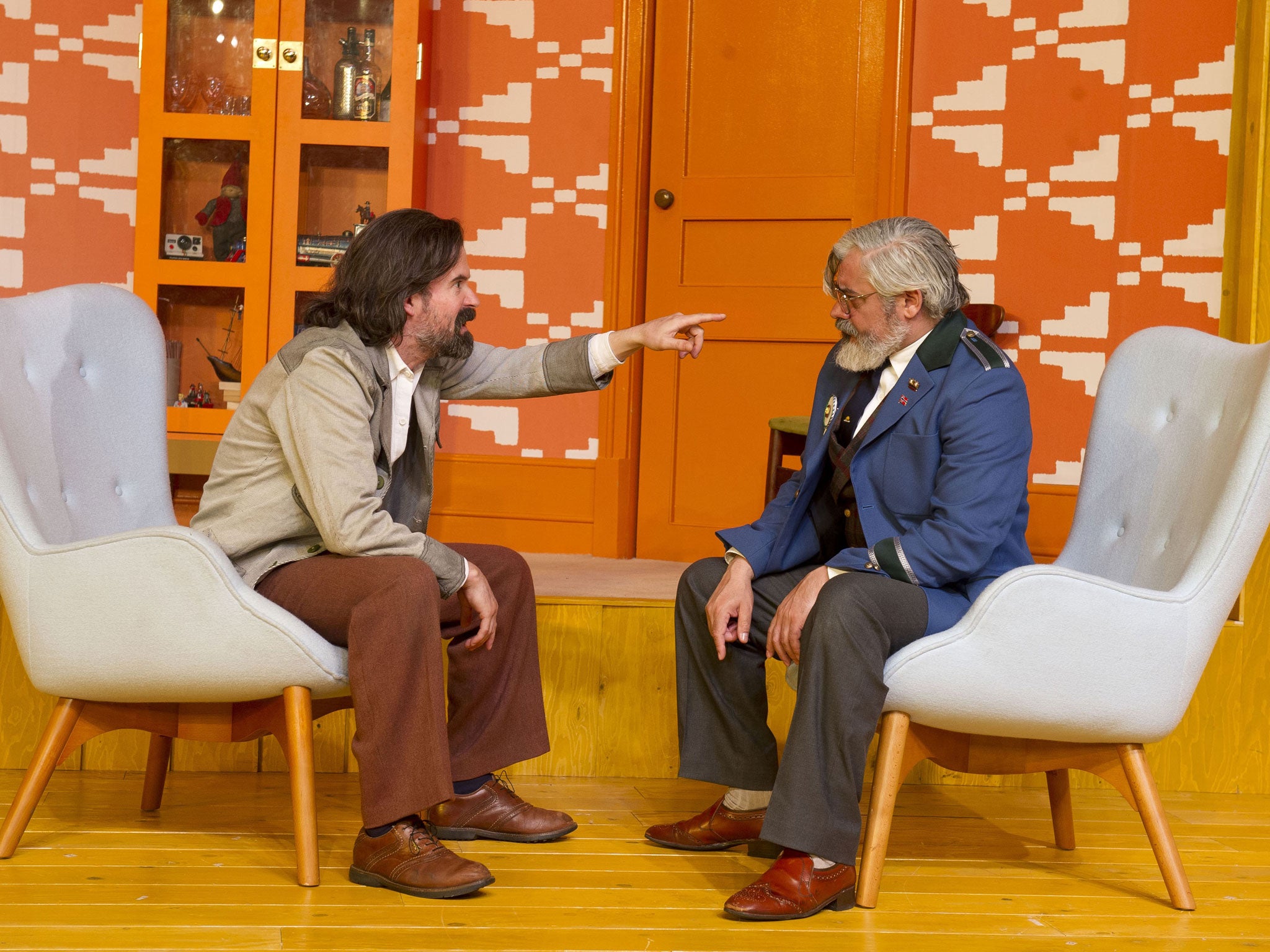The new version of Ibsen's Public Enemy is a drama where democracy doesn't win any votes
Plus: Propaganda's crowning moments at the British Library and the Chapman brothers first exhibition in China should go down well with local audiences

There was an interesting moment in the Young Vic's new version of Ibsen's Public Enemy the other night. Richard Jones's production presents the fourth act as a genuine town-hall meeting, enlisting the audience as the restive townspeople whose livelihoods will be threatened by the revelation that the waters of the local spa have been polluted.
So, when Aslaksen proposes the resolution that Stockmann should be declared an enemy of the people, it's our votes he's soliciting. And whereas Ibsen's original text has the vote conducted by ballot to spare the doctor's feelings, David Harrower's pacey shortened version explicitly asks for a show of hands. On the night I went the woman next to me lifted her arm in the air. And then, looking around and finding that she was almost entirely alone, she awkwardly pulled it down again.
I wondered what she was thinking. True, Dr Stockmann has just gone off on one in ways that offend many modern pieties. He's described democracy as a kind of gang-rape. He's asked whether "the stupid [should] be allowed to rule over the clever for all time". He's contemptuously pointed out that a popular choice is not the same thing as a responsible one. So it's possible that she really did feel a sense of outrage and assumed that she'd just been asked a question that expected the answer "Yes".
Alternatively, she may simply have felt that since this production had put us in the role of outraged citizens it was only polite to have a go at playing one. She didn't really think Stockmann was a public enemy but her "character" required it.
Had the rest of us been more cowardly or more sensible? I'm sure British reticence had something to do with the awkwardness of this moment. Play it off-Broadway or in a late-night venue at the Edinburgh festival and you might have a near-riot on your hands.
But it wasn't just shyness that held the rest of us back. I think we'd also recognised that this breach in the fourth wall was a broken-backed device. It wasn't hard to follow Jones's (or Harrower's) logic. If, as in the original text, the stage is filled with "a crowd of townspeople of all sorts" then we are effectively let off the hook. Stockmann's tirade against "the howling of the masses" doesn't incriminate us. It's aimed at those petty-minded Norwegians, preoccupied with the tourist kroner. But if the audience for his speech overlaps precisely with the audience for the play he's in, there's no escaping the prodding finger in the chest. Don't look around. I mean you, you saps.
Ironically, though, the sense of democracy that is under attack in this scene is also what prevents Jones's staging of it from fully working. Because we're fully aware that we have no vote at all in this affair. You might, for instance, be tempted to shout "No. Sit down, Aslaksen! You're the public enemy here!" But you know full well that, even if Richard Jones would be gratified by that response, the evening has no way to contain it.
What if everyone joined in? Act Five, in which Dr Stockmann returns to his vandalised home is going to look a little strange if, metaphorically at least, we've hoisted him to our shoulders and treated him as a hero. So Aslaksen's request invites a response but requires our silence... or our insincerity.
At precisely the moment when an onstage assembly can (and must) behave like a thoughtless mob we become uncomfortably aware that we are required to be responsible. I think our reserve the other night was a silent vote on what we felt about that. You can berate us, insult us and scorn us and we'll take it. But tell us fibs and we get uncomfortable.
Propaganda's crowning moments
Propaganda might be destructive of art, but it can be an inspiration for graphic art. The British Library's new exhibition on propaganda includes two great posters I hadn't seen before, both of which distill their message into a simple image. One was used during the liberation of France and features a swastika hastily obscured by swipes of red, white and blue paint. The other, a Soviet snipe at the repression of civil-rights protests in America, shows the Statue of Liberty with two policemen peering from her eyes, a dangling billy-club forming a single tear. Irresistable both of them, which is as good as propaganda gets.
Chapmans to make it in China
My guess is that the Chapman brothers' first exhibition in China will go down pretty well with local audiences, if only because The Sum of All Evil, one of their miniature Nazi infernos, has a distinct aesthetic kinship with another venerable Chinese tourist attraction. The Ten Courts of Hell exhibit at the Tiger Balm Gardens in Singapore is a collection of cement figurines which out-Chapmans the Chapmans when it comes to grisly tableaux. There is a Tiger Balm Gardens in Hong Kong, too, but I think it's a tamer affair than the Singapore original. If they want inspiration, they should stop off on the way home and check out what an ointment magnate can do when it comes to monstrous chimeras and scenes of vivisection.
Join our commenting forum
Join thought-provoking conversations, follow other Independent readers and see their replies
Comments